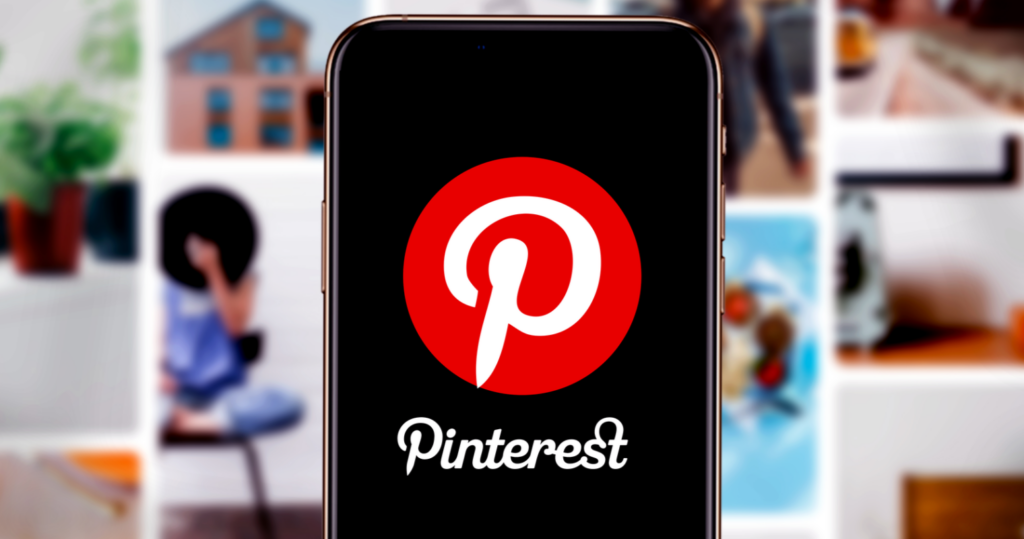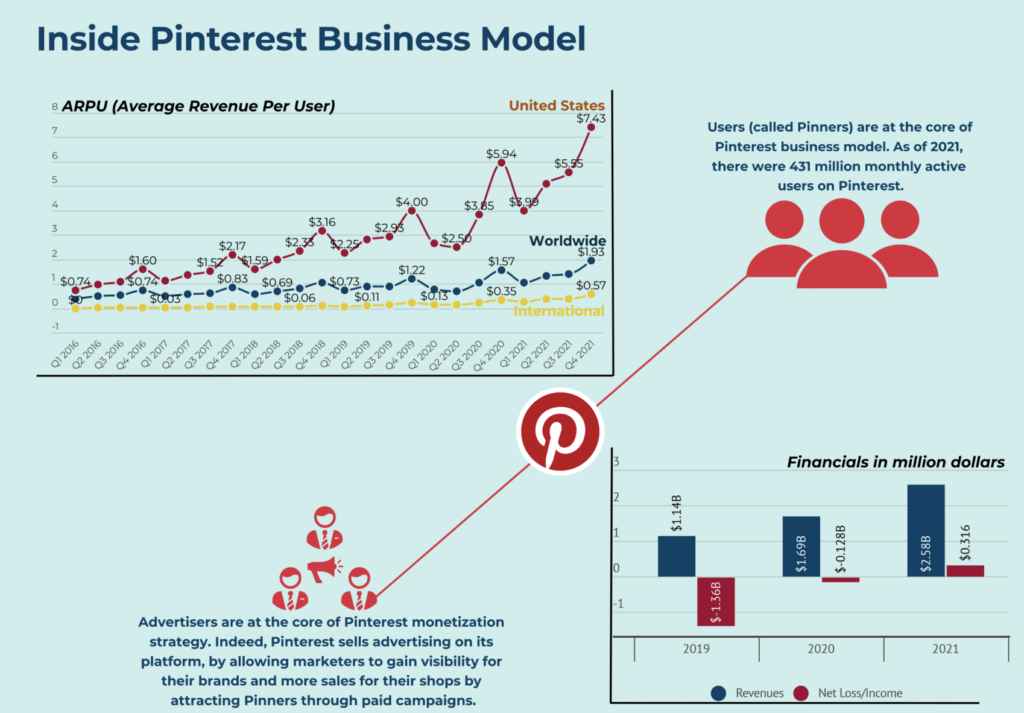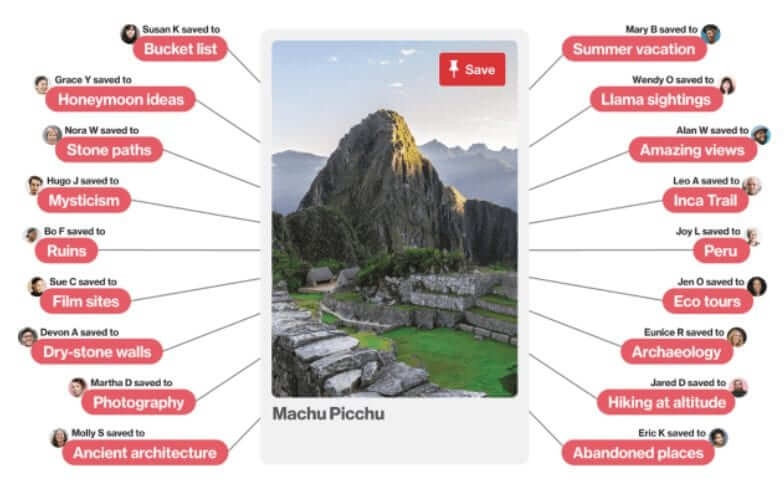Pinterest: Discover, Share, and Pins

“Pinterest is the visual discovery engine. It is where you find and do what you love. With Pinterest, you can discover useful and relevant things that inspire you to do stuff.”
Pinterest started as a tool to help people collect things they were passionate about, but soon became apparent that the real joy was in gaining inspiration from what other people were sharing and applying that inspiration to their own lives.
Pinterest, founded in 2010, San Francisco, is a creative photo and video sharing platform that shares ideas and inspiration in a larger community. It went public through an initial public offering in 2019. As a platform, Pinterest users can take advantage of creating and managing theme-based photo collections of hobbies, events or any other content of general interest, as well as curated and hand-picked contents. Pinterest has more than 400 million monthly active users and over 240 billion pins that are saved by pinners to discover ideas, such as cooking recipes, wedding planning, fashion, art projects, etc. It generates different topics within segments and works to create matching and relevant content tailored to users’ needs. Also, Pinterest provides users with the ability to curate their personal boards as well as upload their own visual content to the boards. Uploading, saving, categorizing, and managing pins and consumable media content, Pinterest creates a more personalized experience for individual users and allows friends in social groups to check and share their personal pinboards.
Pinterest Business Model
Pinterest makes money by selling advertising to marketers and businesses who want to increase brand visibility and want to drive sales to their websites. With 431 million monthly active users and a net income of $316 million in 2021, Pinterest generated $2.58 billion in advertising revenue.
Two Players
Pinners: People who come to Pinterest to explore and collect ideas for activities or events with pins. Pin defined as “an idea represented by an image or video, regularly linked to other websites that showcase a variety of contentand ideas for Pinners to explore.” Those pinners receive the service for free, but they are the core attractor of the Pinterest business model.
According to Pinterest statistics,
- 40% of Pinners Have a Household Income of $100k+.
- 48% of Pinterest users in the US use the platform to shop.
- Two-thirds of pins represent brands and products.
- 77% of People who use Pinterest have found a new brand or product on the platform.
- There are 50% more products from retailers in their corpus.
There is the high potential of awareness and buying power for the advertising market.
Advertisers: They are the core of the Pinterest monetization strategy. Pinterest provides advertisers the empowering environment, valuable audience and the discovery Journey, and allow them to cover the whole sale funnel from awareness to conversion.
As the sales funnel showing below, Pinterest intend to attract advertisers look for awareness, the offline brand advertising for consideration and target online performance advertising based on conversion.
Pinterest Value Creating
Pinterest tries to differentiate and create their value around 4 aspects:
- Visual experience: Pinterest focuses on visual discovery and search, which makes Pinterest a unique place on the web.
- Human curation and personalization: Pinterest Taste Graph uses pins carefully selected, saved and organized by hundreds of millions of Pinners over the years, creating billions of boards as a body of data.
- Designed for future action: A visual experience makes people visualize the future and take action.
- Empowering environment: Pinterest claims that most users feel empowered by using the platform. I claim for generating inspiration for people instead of dear of missing.
Scalability and sustainability
Pinners: the key to sustainable growth is putting Pinners first and finding ways to increase the value people get from Pinterest. Pinterest growth team works to improving the experience for existing Pinners, more effectively communicating the benefit of Pinterest to new users or improving content for less engaged people with four techniques: user state transition, Xd28s, cohort heat map, and conversion funnels to capture and measure possible user state transition and allocate the resource and concentrate their efforts to deliver maximum impact.
Advertiser: During influence of pandemic, there are increased searched for “support small business”. They were able to support those small business owners to be added in their Pinterest shop as will as providing them resources:
- Catalogs: brands can upload their latest product feeds and turn them into shoppable Pins. It becomes easier to find retailers you love as well as to discover new ones.
- Verified merchant program: a new verification program that makes it easy to identify merchants who’ve met our guidelines and gives retailers with high quality practices access to increased discovery and distribution and metrics like conversion reporting.
- Pinterest academy: a free e-learning tool, also offers a range of lessons and tips to help small businesses get a better handle on how to use Pins for their business.
Recently, they also launch the new Pinterest trending tool that helps advertisers around the world get deeper insights into Pinner planning behaviors to inform campaign planning through creative and targeting.
Although, Pinterest often lumped with other social media platform, like Instagram, Facebook, etc. It views itself as a discovery service and as tool for planning future projects with the unique business model on visual discovery and purchase.
Sources:
- https://www.socialpilot.co/blog/pinterest-for-business
- https://fourweekmba.com/how-does-pinterest-work-make-money/
- https://www.investopedia.com/articles/investing/081815/inside-look-pinterests-business-model.asp
- https://newsroom.pinterest.com/en/company
- https://medium.com/@Pinterest_Engineering/how-pinterest-drives-sustainable-growth-1a3f150a1f98
- https://newsroom.pinterest.com/en/sustainability
- https://newsroom.pinterest.com/en/post/pinterest-rolls-out-new-tools-to-help-advertisers-discover-emerging-trends-and-measure-success








Thanks a lot Feifei for your post. I have heard so much about Pinterest in the past few years but I have to admit, until now I never really understood why people are using Pinterest. I guess its really about finding inspiration and ideas for personal hobbies and interests as you said. Personally, I think I am never going to be a Pinner, however, I noticed that when I was looking for a fine recipe, I inevitably stumbled across Pinterest posts. Nevertheless, this happens so rarely that I will probably never consider having my own profile. I could well imagine that this recurrence of users could be a problem compared to other social media platforms such as facebook or instagram. Do you have any information on how often the average user dials in on the platform?
Feifei this is very interesting. My sister is a prolific user of Pinterest and at one point was averaging about 1M monthly views on her Pinterest board. I think one thing Pinterest could consider is having more direct brand marketing content. For example, leveraging certain high-influence users to post and pin about specific content could be used to drive sales for advertisers. Do you know if they do anything like this?
This was super interesting, I had never seen so many people use Pinterest until I came to the US.
It is funny how when we talk about social media, we consider Instagram, Facebook, TikTok … but Pinterest? not that much.
I agree with Aniruddh’s point, It would be super interesting to see how the influencer trend could boost up user engagement for the platform, boost up revenue for “big” users and create this competitive loop between different brands in the platform.
I think active, paid influencers would help the funnel get to sale convertion.
Great post!